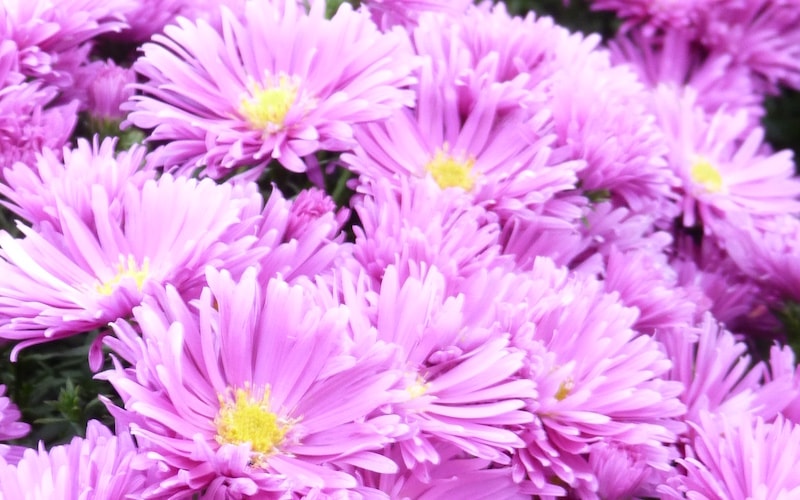The ‘Chelsea chop’ is a method of pruning herbaceous perennials to delay the start of their flowering period. A good way to keep your plants bushy and compact, it also helps to prevent them from galloping away and becoming tall and leggy. Its name comes from the fact that it’s usually done at the same time as the RHS Chelsea Flower Show (in late May or early June). We asked our horticultural team for advice on which plants are best suited to this treatment, and how to get the best results…
Want to fill your beds and borders with easy colour? Browse our wide range of perennial plants now.
The benefits of the Chelsea chop

Plant dwarf aster in beds and containers for beautiful displays of colour from late summer into autumn
Image: Aster Plants – Tonga from Suttons
Suitable for most late-flowering perennials, the Chelsea chop reduces the size of the plant and delays the flowering season by up to six weeks, ensuring that you still have colour when other flowering has ended. The closer the chop is delivered to the natural flowering period, then the longer the blooms will be delayed. If you have several plants of the same variety, you could chop back some and leave others. This will give you colourful blooms over a much longer period, rather than just delaying them all.
The Chelsea chop has advocates and opponents – some gardeners are unwilling to chop off the healthy flower heads that they’ve been looking forward to all winter. Others feel that, however brutal the action, the benefits make the initial sacrifice worth it. Some of the benefits include:
- Neater and more compact plants
- The stems grow stronger and are less prone to flopping
- Less staking is required and there’s less chance of wind rock and damage
- The flowers come later, when other plants have finished
- More flowers, although slightly smaller
How to give your plants a Chelsea chop

Use Helenium to attract bees and butterflies into your garden
Image: Helenium ‘Peach Sundae’ from Suttons
The Chelsea Chop can be performed on a wide range of perennials. Some choppers are braver than others, but most gardeners reduce plants by about a third, using sharp shears or secateurs.
Different varieties of late-flowering perennials can be cut to different levels. If you have a very large clump, try cutting the front lower than the back to ensure a succession of flowers throughout the summer.
Which plants benefit from a Chelsea chop?

Drought-tolerant and hardy, fill containers or borders with the pollinator-friendly Sedum ‘Atlantis’
Image: Sedum ‘Atlantis’ from Suttons
Plants that benefit from the Chelsea chop include:
The Chelsea chop is an easy way to control the shape and flowering period of a plant, but it’s not suitable for all flowers. Those that bloom only once, like irises, aquilegias and peonies shouldn’t be pruned before they’ve had a chance to flower.
We hope this has helped you to decide whether to give your own plants a Chelsea chop. If you’re looking to fill your garden with colour, read our article for tips on how to create a perennial border on a budget. Stocking up on plug plants? Here’s how to get the best out of your perennials.
Lead image: Rudbeckia Plants – Goldsturm from Suttons
Last Updated on December 3, 2025 by Suttons Horticultural Team





